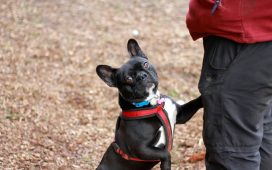In the world of dog ownership, understanding the differences between dog breeds and their distinct exercise needs can allow us to better care for them. While it’s not too hard to meet the basic physical requirements of our pets, delving deep into the heart of what makes each breed unique can pay dividends for their health.
From the majestic strides of a Greyhound to the playful frolics of a French Bulldog, each breed has different energy levels, historical roles, and preferences that shape their ideal exercise regimen. Acknowledging these needs is not merely a responsibility – it’s an opportunity to learn more about the very essence of our canine companions, offering them a life brimming with health, contentment, and the pure, unbridled joy of being in motion.
Let’s peel back the layers, revealing the science and psychology that underpin these differences, and illuminate the path to truly understanding and catering to the vast spectrum of canine fitness needs.
Breed-Specific Exercise Preferences:
At the heart of canine wellness lies a nuanced understanding of breed-specific exercise preferences. These preferences are not random but are deeply rooted in the historical roles each breed was developed for, alongside their size and inherent energy levels.
Herding Breeds such as Border Collies and Australian Shepherds, imbued with an inexhaustible drive, thrive on activities that challenge both their mind and body. These dogs excel in agility training, herding (naturally), and even competitive obedience, activities that mirror their historical tasks of managing livestock and vast lands.
Hunting Breeds like Labrador Retrievers and Beagles, on the other hand, show a marked preference for exercises that engage their tracking instincts and love for the chase. Fetch, swimming, and hiking through varied terrains offer these breeds both the physical exertion and mental stimulation they crave.
Companion Breeds, like the Pomeranian, Cavalier King Charles Spaniel, and Spoodle, may not demand the intense activity levels of their herding or hunting counterparts, but they still benefit from regular, moderate exercise. Short walks, interactive play sessions, and puzzle toys can meet their needs, promoting a healthy lifestyle without overwhelming them.
A large online survey of dog owners in the UK, approved by the University of Liverpool Ethics Committee and detailed in the Journal of Nutritional Science, provides empirical evidence supporting the claim that different dog breeds exhibit varying exercise behaviours and needs. The study categorised dogs into breed-specific groups (e.g., pastoral, gundogs, hounds, terriers, toy, utility, or working) and by size (small, medium, or large) according to The UK Kennel Club classification.
The study found significant variations in exercise frequency and duration among different breeds and breed groups, highlighting the influence of breed characteristics on exercise preferences. For example, breeds traditionally involved in hunting and herding were more likely to be exercised once per day or more, whereas toy and terrier breeds showed lower exercise frequencies.
The Role of Genetics and Physiology:
The role of genetics and physiology in shaping a dog’s exercise behaviour is profound. Muscle composition, for instance, varies significantly among breeds, influencing their strength, speed, and endurance. Greyhounds, known for their lean muscle mass and fast-twitch fibres, are built for speed, making them exceptional sprinters. In contrast, breeds like the Saint Bernard, with a more robust build, possess the endurance suited for prolonged activities at a moderate pace, such as hiking or pulling sleds.
Joint health is another critical factor. Breeds prone to conditions like hip dysplasia, such as German Shepherds, may require special consideration to avoid aggravating their condition, favouring swimming or other low-impact activities.
Stamina, influenced by both genetic predisposition and physical conditioning, dictates the intensity and duration of exercise a dog can comfortably handle. Understanding these physiological nuances is key to developing an exercise regimen that is both safe and satisfying for our canine friends.
Mental and Physical Health Benefits:
The mental and physical health benefits of breed-appropriate exercise are far-reaching. For high-energy breeds, regular, vigorous exercise can be a powerful tool for stress reduction, preventing the development of anxiety and destructive behaviours. In contrast, breeds with lower energy levels may find mental stimulation and moderate physical activity crucial for maintaining weight and preventing obesity-related health issues.
Exercise also plays a vital role in preventing behavioural issues. Dogs engaged in regular, mentally stimulating exercise exhibit fewer signs of stress and aggression, highlighting the importance of a well-rounded fitness regimen that caters to both the body and mind.
Interactive Activities:
Engaging in interactive activities not only meets the physical demands of different breeds but also strengthens the bond between dogs and their owners. For high-energy breeds, activities like fetch, agility courses, or even dog sports such as flyball can be exhilarating. For more laid-back breeds, puzzle toys, scent games, or gentle tug-of-war matches can provide mental stimulation and moderate physical activity.
Conclusion:
Recognizing and accommodating the unique exercise needs of various dog breeds is not just about fulfilling a responsibility; it’s about enhancing the quality of life for our canine friends. By observing and adapting to our pets’ preferences and requirements, we can ensure they lead a healthy, active, and fulfilled existence. Encourage observation, adaptability, and, most importantly, enjoy the journey of discovery with your furry companion.















